Related Research Articles
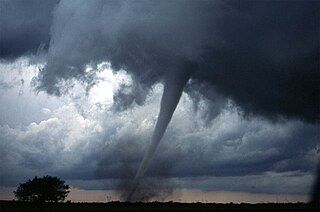
Extreme weather includes unexpected, unusual, severe, or unseasonal weather; weather at the extremes of the historical distribution—the range that has been seen in the past. Extreme events are based on a location's recorded weather history. They are defined as lying in the most unusual ten percent. The main types of extreme weather include heat waves, cold waves and heavy precipitation or storm events, such as tropical cyclones. The effects of extreme weather events are economic costs, loss of human lives, droughts, floods, landslides. Severe weather is a particular type of extreme weather which poses risks to life and property.
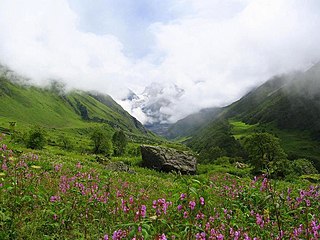
The climate of India consists of a wide range of weather conditions across a vast geographic scale and varied topography. Based on the Köppen system, India hosts six major climatic sub types, ranging from arid deserts in the west, alpine tundra and glaciers in the north, and humid tropical regions supporting rain forests in the southwest and the island territories. Many regions have starkly different microclimates, making it one of the most climatically diverse countries in the world. The country's meteorological department follows the international standard of four seasons with some local adjustments: winter, summer, monsoon or rainy season, and a post-monsoon period.

On 26 December 2004, at 07:58:53 local time (UTC+7), a major earthquake with a magnitude of 9.1–9.3 Mw struck with an epicentre off the west coast of northern Sumatra, Indonesia. The undersea megathrust earthquake, known by the scientific community as the Sumatra–Andaman earthquake, was caused by a rupture along the fault between the Burma Plate and the Indian Plate, and reached a Mercalli intensity up to IX in some areas.
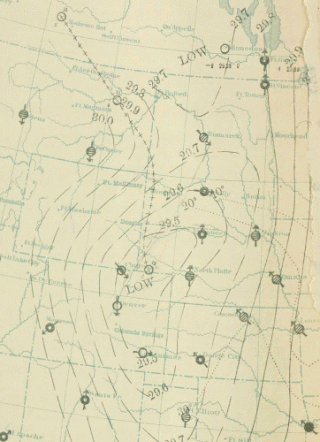
In mid-January 1888, a severe cold wave passed through the northern regions of the Rocky Mountains and Great Plains of the United States, then considered to be the northwestern region of the nation. It led to a blizzard for the northern Plains and upper Mississippi valley where many children were trapped in schoolhouses where they froze to death. This tragedy became known as the Schoolhouse Blizzard, Schoolchildren's Blizzard, or The Children's Blizzard. This cold snap and blizzard were part of a month when temperatures averaged below normal by 6 to 12 °F across much of the northern and western United States.
A cold wave is a weather phenomenon that is distinguished by a cooling of the air. Specifically, as used by the U.S. National Weather Service, a cold wave is a rapid fall in temperature within a 24-hour period requiring substantially increased protection to agriculture, industry, commerce, and social activities. The precise criteria for a cold wave are the rate at which the temperature falls, and the minimum to which it falls. This minimum temperature is dependent on the geographical region and time of year.
The climate of Uttar Pradesh (U.P.) is primarily defined as humid subtropical with dry winter (Cwa) type with parts of Western U.P. as hot semi-arid (BSh) type. Alternatively, some authors refer to it as tropical monsoon. Variations do exist in different parts of the large state. However, the uniformity of the vast Indo-Gangetic Plain forming the bulk of the state gives a predominantly single climatic pattern to the state with minor regional variations. U.P. has a climate of extremes. With temperatures fluctuating anywhere from 0 °C or 32 °F to 50 °C or 122 °F in several parts of the state and cyclical droughts and floods due to unpredictable rains, the summers are extremely hot, winters are cold and the rainy season can be either very wet or very dry.

A deadly cold wave started in Europe on January 27, 2012, and brought snow and freezing temperatures to much of the continent. There were more than 824 reported deaths in both Europe and North Africa. Particularly low temperatures hit several Eastern and Northern European countries, reaching as low as −42.7 °C (−44.9 °F) in Finland. The heaviest snow was recorded in the Balkan region. The cold weather was a result of an extensive area of very high pressure located over the north east of the continent in northern Russia, which circulated cold air from the east.

Indian cold wave during the winter months of 2012 killed at least 92 people across northern and eastern India. The drop in temperature had a devastating effect on the hundreds of thousands of homeless people in India.

The 2013 extreme weather events included several all-time temperature records in Northern and Southern Hemisphere. The February extent of snow cover in Eurasia and North America was above average, while the extent of Arctic ice in the same month was 4.5% below the 1981–2010 average. The Northern Hemisphere weather extremes have been linked to the melting of Arctic sea ice, which alters atmospheric circulation in a way that leads to more snow and ice.

The November 2014 North American cold wave was an extreme weather event that occurred across most of Canada and the contiguous United States, including parts of the Western United States up to western California. One of the first events of the winter, the cold wave was caused by the northward movement of an extremely powerful bomb cyclone associated with Typhoon Nuri's remnant, which shifted the jet stream far northward, creating an omega block pattern. This allowed a piece of the polar vortex to advance southward into the Central and Eastern United States, bringing record-cold temperatures to much of the region. In contrast, Alaska experienced above-average temperatures.
In May 2015, India was struck by a severe heat wave. As of 3 June 2015, it caused the deaths of at least 2,500 people in multiple regions. The heat wave occurred during the Indian dry season, which typically lasts from March to July with peak temperatures in April and May. Although it typically remains hot until late October, Indian monsoons often provide some respite from the heat.

In late January 2016, a cold wave struck much of East Asia, parts of mainland Southeast Asia and parts of northern South Asia, bringing record cold temperatures and snowfall to many regions. Sleet was reported in Okinawa for the first time on record, and many other regions saw their lowest temperatures in decades. Snowfall and frigid weather stranded thousands of people across four countries. At least 85 people in Taiwan died from hypothermia and cardiac arrest following a sudden drop in temperature during the weekend of January 22–24. The cold claimed a further fourteen lives in Thailand, and snowstorms resulted in six deaths across Japan. This event was driven by a fast Arctic warming that occurred within the troposphere, forcing the Arctic Oscillation to change phase rapidly from positive to negative, facilitating the atmospheric blocking and associated Siberian high buildup.

The 2011–12 North American winter by and large saw above normal average temperatures across North America, with the Contiguous United States encountering its fourth-warmest winter on record, along with an unusually low number of significant winter precipitation events. The primary outlier was Alaska, parts of which experienced their coldest January on record.
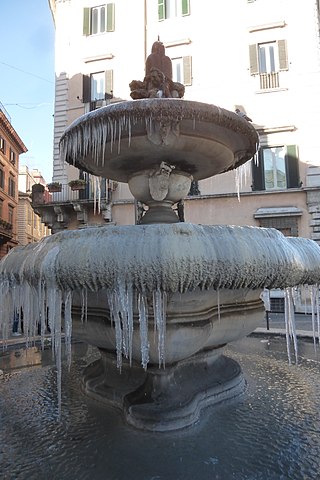
A period of exceptionally cold and snowy winter weather in January 2017 occurred in Eastern and Central Europe. In some areas, flights and shipping services were suspended, and there was major disruption to power supplies and other essential infrastructure. The weather was the result of stationary high pressure over western Europe, resulting in strong winds circulating from Russia and Scandinavia towards eastern Europe. On 9 January, the Continental Arctic (cA) air mass extended from Germany across the Balkans, resulting in deep snow in Greece and strong bora winds affecting Croatia in particular. In addition, heavy snow in central and Southern Italy was the result of cold air flowing across the warmer Adriatic Sea. At least 73 deaths were attributed to the cold wave.

North India was devastated by a cold wave during the month of January 2017. This occurrence had a severe effect on several North Indian states, including Himachal Pradesh, Jammu and Kashmir, Punjab, Haryana, Rajasthan, and Uttar Pradesh. The lowest temperature in Gulmarg due to the cold wave was recorded at −12.4 °C (9.7 °F). The banks of Dal Lake in Srinagar froze. Keylong of Himachal Pradesh and Kargil of Jammu and Kashmir witnessed low temperatures of −13.9 °C (7.0 °F).

The February 2021 North American cold wave was an extreme weather event that brought record low temperatures to a significant portion of Canada, the United States and parts of northern Mexico during the first two-thirds of February 2021. The cold was caused by a southern migration of the polar vortex, likely caused by a sudden stratospheric warming event that occurred the prior month. Temperatures fell as much as 25–50 °F below average as far south as the Gulf Coast. Severe winter storms also were associated with the bitter cold, which allowed for heavy snowfall and ice accumulations to places as far south as Houston, Texas, and contributing to one of the snowiest winters ever in some areas in the Deep South.
The following is a list of weather events in 2019.
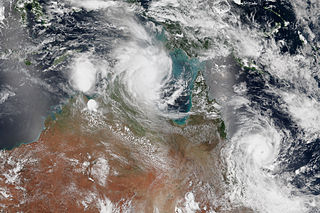
The following is a list of weather events that occurred on Earth in the year 2015. There were several natural disasters around the world from various types of weather, including blizzards, cold waves, droughts, heat waves, tornadoes, and tropical cyclones.
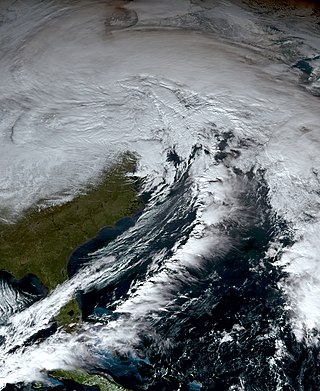
From December 21 to 26, 2022, an extratropical cyclone created crippling winter storm conditions, including blizzards, high winds, snowfall, and record cold temperatures across the majority of the United States and parts of Canada. Areas which experienced blizzard conditions included parts of Minnesota, Iowa, Wisconsin, Michigan, Ohio, Pennsylvania, New York and Ontario, with the Buffalo area of New York and the Fort Erie and Kingston areas of Ontario experiencing almost two full days of blizzard/zero-visibility conditions starting from December 23. The cold wave affected all U.S. states from Colorado to the Eastern Seaboard, with effects felt as far south as Miami, Florida. On December 24, 110 million people across 36 states were subject to wind chill alerts.

The following is a list of weather events that occurred on Earth in the year 2023. The year saw a transition from La Niña to El Niño, with record high global average surface temperatures. The several weather events which had a significant impact were blizzards, cold waves, droughts, heat waves, wildfires, floods, tornadoes, and tropical cyclones.